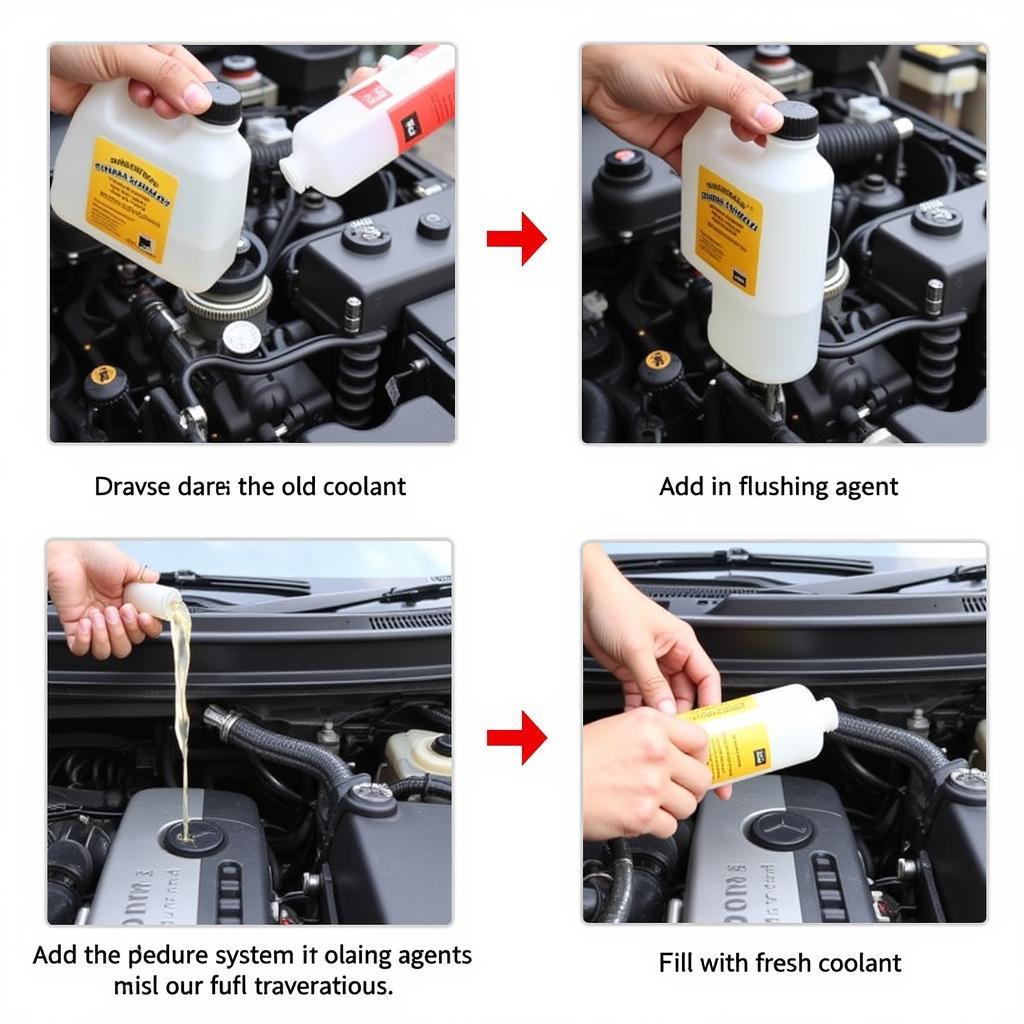Knowing how much to fix a heater core in a car is a common concern for many vehicle owners. A malfunctioning heater core can leave you shivering in the winter and fog up your windshield, creating a dangerous driving situation. This guide provides a detailed breakdown of heater core replacement costs, diagnostic tips, and preventative measures.
Understanding the Heater Core and Its Function
The heater core is essentially a small radiator located inside your car’s dashboard. It uses hot engine coolant to warm the air blown into the cabin. When the heater core fails, it can leak coolant, leading to a sweet smell, foggy windows, and overheating.
Factors Affecting Heater Core Replacement Cost
Several factors influence how much you’ll pay to fix a heater core in your car. These include:
- Vehicle Make and Model: Luxury or imported vehicles often have more complex designs and require specialized parts, increasing the cost. For example, replacing a heater core in a BMW might be significantly more expensive than in a Honda Civic.
- Labor Costs: Labor rates vary depending on your location and the mechanic’s expertise. Independent shops might offer lower rates than dealerships.
- Part Quality: Aftermarket heater cores are generally cheaper than OEM (Original Equipment Manufacturer) parts, but they may not last as long.
- Extent of Damage: If other components are damaged due to a leaking heater core, such as the carpet or electrical systems, the repair costs will rise.
Estimating the Cost: How Much Does it Cost to Fix a Heater Core?
The average cost to fix a heater core ranges from $500 to $1,500, including parts and labor. This can be higher for luxury or classic cars. The part itself typically costs between $50 and $250, while labor can range from $450 to $1,250.
Is it Worth Fixing a Heater Core?
Whether it’s worth fixing a heater core depends on the age and overall condition of your vehicle. For older cars with other mechanical issues, the cost of repair might outweigh the car’s value. However, for newer vehicles, repairing the heater core is usually a worthwhile investment.
DIY vs. Professional Repair
While some mechanically inclined individuals might consider a DIY heater core replacement, it’s a complex and time-consuming job. It involves disassembling the dashboard, which can be tricky and requires specialized tools. Unless you have significant experience, it’s generally recommended to leave this repair to a qualified mechanic.
How Long Does it Take to Replace a Heater Core?
Replacing a heater core typically takes between 4 and 8 hours, depending on the car’s make and model. This can vary based on the mechanic’s experience and the complexity of the dashboard removal process.
Preventing Heater Core Issues
Regular maintenance can help prevent heater core problems. This includes:
- Flushing the Cooling System: Flushing the cooling system every 2-3 years removes contaminants that can clog the heater core.
- Using the Right Coolant: Using the correct coolant type and concentration protects the heater core and other cooling system components from corrosion.
- Checking for Leaks: Regularly inspect the floorboards and under the hood for signs of coolant leaks.
 Car Cooling System Flush
Car Cooling System Flush
Conclusion
Understanding how much to fix a heater core in your car requires considering several factors, including your vehicle’s make and model, labor costs, and the extent of the damage. While the cost might seem daunting, a functioning heater core is crucial for comfort and safety, especially in colder climates. Don’t hesitate to contact AutoTipPro at +1 (641) 206-8880 or visit our office at 500 N St Mary’s St, San Antonio, TX 78205, United States for expert advice and assistance with your heater core repair.
Expert Quote: “A properly maintained cooling system can significantly extend the life of your heater core and prevent costly repairs down the road,” says John Smith, ASE Certified Master Technician.
Expert Quote: “Don’t ignore the signs of a failing heater core. Addressing the issue early can prevent further damage to your car’s interior and electrical system,” adds Jane Doe, Automotive Engineer.




Leave a Reply